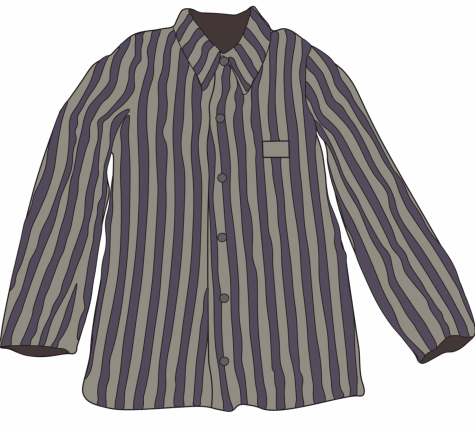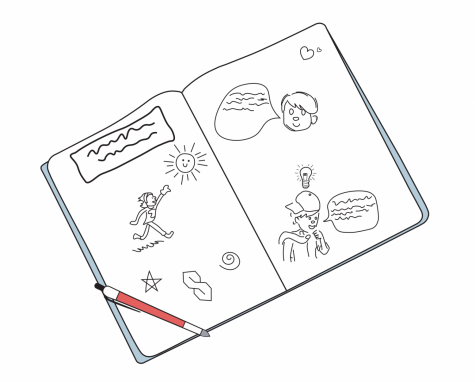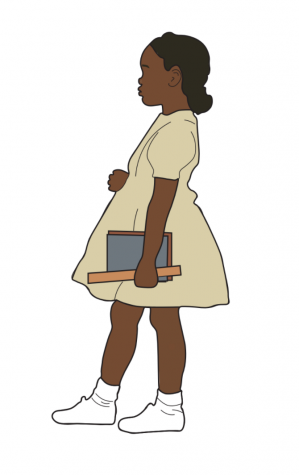Race in our media
Books and movies about race and race relations
November 9, 2020
Editor’s note: This story was named a superior entertainment feature in the 2021 TAJE Best of Texas contest. It also won second place for online entertainment reviews in the ILPC contest.
At the beginning of the summer, the Black Lives Matter movement sparked protests and opened up conversations about race, and people started turning to media choices to learn more about race relations.
If you’re interested in educating yourself about this subject, know that there’s no easy way to do it. It’s going to require doing research and having conversations with people different from you, and it definitely won’t all happen in a day. But books and movies that address race are a good place to start your research.
Books
“The Boy in the Striped Pajamas” by John Boyne

Summary
We’ve all been taught about the Holocaust, and we’ve all been told that it was horrific, but in “The Boy in the Striped Pajamas,” John Boyne allows us to see it for ourselves.
It tells the Holocaust from the eyes of a 9-year-old German boy named Bruno. Bruno doesn’t know a lot about his father’s line of work — all he knows is that it’s the reason why his family is able to live in their large house in Berlin. And he knows that it’s important.
But one day, his father gets a new job that brings the family to a strange new house. On the family’s first day there, Bruno looks out from his bedroom window and sees a tall fence in the distance. Crowds of men and boys that are all wearing what look like striped pajamas and caps are behind it.
As the book progresses, two things become clear: One, the men behind the fence are suffering. And two, it’s at the hands of Bruno’s father.
What you’ll learn
If you’ve watched the movie adaptation, you know that this story is sad. It’s a hard look at merciless Jewish persecution, but little Bruno is never able to fully comprehend what is happening. At the heart of the book is Bruno’s friendship with a Jewish boy named Shmuel who lives behind the fence. Even though Bruno’s father and the German soldiers keep reminding Bruno that he is superior to Jews, Bruno never stops believing that Shmuel is just as human as he is.
The Holocaust has become such a staple in the high school history curriculum that can be easy to lose sight of what actually happened between assigned reading and essays — but “The Boy in the Striped Pajamas” will force you to see the Holocaust victims as people instead of numbers. And it will probably make you cry.
“Bloodlines: Race, Cross, and the Christian” by John Piper
Summary
I go to church regularly, and George Floyd’s death over the summer sparked a lot of discussion in my church about race. In fact, the Sunday after the incident my pastor pushed his prepared message to the next week so that he could address it. He said that it was important for White Christians to honor their Black brothers and sisters, and that’s the phrase Bloodlines” revolves around: brothers and sisters.
In this book, John Piper, who is White, openly talks about his childhood in segregated South Carolina — how he used to look down on Black people and saw no problem with the segregation in his church. After this, he talks about what he believes can solve the racism he sees among Christians today: the good news that Jesus Christ died and rose for all ethnicities.
What you’ll learn
What I like about “Bloodlines” is that it doesn’t stop at providing the gospel as the answer to racial conflict — it will walk Christians through exchanging a race-focused mindset for a gospel-focused mindset, and will help them love people that are different from them.
Christians will leave this book with more knowledge of how to avoid exclusive Christianity and seek unity with believers of all races, while non-Christians will learn that though racism is sometimes committed in the name of God, He longs for His people to be unified.
“New Kid” by Jerry Craft

Summary
I’m thoroughly convinced that “New Kid” is every Black American teenager’s dream.
It’s a graphic novel about seventh grader Jordan Banks, who loves cartooning. He deals with things by drawing about them, and he’s hoping that his parents will let him go to art school this year.
But instead, they send him to Riverdale Academy Day School, a private school known for its academics and opportunities, but also for its mostly White population. And so Jordan has to navigate being not only the new kid, but one of the few Black students at school.
“New Kid” is funny and heartbreakingly honest, with cartoons by Jordan about everything from how to properly shake hands to handling subtle racism.
What you’ll learn
Jordan’s struggle with balancing his “White” life at school and his “Black” life at home is something that I related to and know that a lot of minority youth will too. “New Kid” also exposes stereotypes that are commonly associated with Black people, like the idea that all Black people need financial help and have difficult home lives. It also helps Black students understand what to do when they’re faced with them.
“The Diary of a Young Girl” by Anne Frank
Summary
Anne Frank’s diary is usually assigned reading in middle school, and rightfully so — this book deserved to be mentioned in any classroom discussion about the Holocaust.
It follows Anne Frank as her primary concerns go from algebra and boy troubles to deciding which of her possessions she can take with her as she flees her home in Amsterdam during World War Two. Before their whereabouts are eventually betrayed to the Nazi secret police, the Franks and another Jewish family spend two years in hiding in an office building, and the book is full of Anne’s reflections during that time.
Since it was a teenager’s diary, “The Diary of a Young Girl” is written in simple language, making it easy to follow. And though it was written decades ago, it can be strangely relatable. Anne’s writing is down-to-earth, wise and hopeful.
What you’ll learn
I think we tend to associate racial issues with racism towards Black people, but “The Diary of Anne Frank” shines some light on the Holocaust — one of the worst race-based genocides in history.
Anne confided in this diary when she felt like she couldn’t confide in anyone else. She named it Kitty and told it all of her thoughts and emotions. So in this diary are the thoughts of a persecuted Jew, and it’s difficult to leave the Holocaust out of discussions about racism when you read about it from this point of view.
“The Diary of a Young Girl” is important, not just because of its historical value, but because of the stance it takes — a Jewish girl who believes that things are going to be okay despite everything. Her narrative teaches about perseverance, positivity and hope.
Movies
“Ruby Bridges”

PG | 1998
Content warning
This movie contains racial slurs and scenes of threatened assault towards a child.
Summary
I initially thought this movie would follow the standard Black injustice plot. But the more I watched it, the more in awe of the main heroine I was.
It’s based on the true story of Ruby Bridges, who is Black. In 1960, when she was 6, she was chosen to attend an all-White elementary school in Louisiana because of her academic ability — but while desegregated schools were technically national law in 1960, Southern states were slow to mix races.
So when Ruby began attending the all-White school, she faced plenty of backlash.
Crowds of White people would gather around the school’s entrance every morning, chanting racial slurs and threats at her as she entered school. White parents pulled their children out of the school until Ruby was the only student left, taught by one teacher.
Despite everything, though, she never missed a day of school. And day by day, with support from God, her family and her community, Ruby made it through the school year.
We could all stand to learn some of Ruby’s positivity, as she endures so much opposition without ever becoming bitter. Actress Chaz Monet portrays Ruby’s innocence flawlessly, and her slow realization that people don’t like her because of her skin tone is heartbreaking. Lela Rochon plays Ruby’s mother, whose determination to give her daughter a better education than she had is at the center of the story. Tender moments are scattered throughout the movie, and I cried on multiple occasions.
What you’ll learn
The movie has strong Christian values, as Ruby’s mother encourages Ruby to follow Jesus’ example by praying for those who “persecute” her. So Ruby prays for the people who hurl threats at her every day before school, and she asks God for help. Ruby leans on Him and her parents for comfort and does her best to move with life.
“Ruby Bridges” also promotes the importance of helping people who are in need, and being humble enough to admit when you need it.
Even though it lacks subtlety in portraying its messages, “Ruby Bridges” has plenty of historical value and will make you smile at the end.
“To Kill a Mockingbird”
NR | 1962
Content warning
This movie contains racial slurs, physical assault towards children and descriptions of sexual assault.
Summary
Whether you annotated “To Kill a Mockingbird” for English class or read the Sparknotes, you might have skimmed through it without realizing that it’s a crucial look at race.
This 1962 adaptation of the book by Harper Lee is from the perspective of 6-year-old Scout Finch, a girl growing up in 1930s Alabama. One day word gets out that Tom Robinson, a Black man, has been accused of raping a White woman. Scout’s father Atticus, who’s a lawyer, agrees to defend him in court.
Atticus is convinced that Tom is innocent, and he sees it as his duty to defend an innocent man. Scout and her brother Jem watch as he refuses to let the violence and threats that emerge from their Southern town shake his decision.
Gregory Peck carries the movie, and he is perfectly casted as Atticus.
No, he is Atticus.
And Mary Badham is Scout, whose father-daughter bond with Atticus is the movie’s warm undertone. Though “To Kill a Mockingbird” is a black and white movie, it is timeless and will stay in your heart long after it’s over.
What you’ll learn
If integrity was a person, it would be Atticus Finch.
He defends Tom, not because it was particularly the popular thing to do, but the right one. And he continues to stick by him for that reason. Scout and Jem adore Atticus, and he cares more about setting a good example for them rather than avoiding conflict with the townspeople. Atticus may be one of the greatest cinematic examples of how to fight for justice.
The way Tom Robinson’s trial is handled by the townspeople shows how powerful racial prejudice can be: it even has the potential to outweigh truth.
“Loving”

PG-13 | 2016
Content warning
This movie contains racial slurs and mild language, drinking, and racially motivated violence.
Summary
“Tell the judge I love my wife.”
I wish that had always been enough for the Lovings.
“Loving” is set in the 1950s and follows newlyweds Richard and Mildred Loving, both of whom grew up in Virginia. Richard is White and Mildred is Black, and they want to raise their family together near Mildred’s childhood home.
But according to Virginian law, interracial marriage was unacceptable. Law enforcement gives the couple an ultimatum: spend time in jail, or leave the state together for 25 years. So after being expelled from their home state, the Lovings decide to fight to make their love legal.
With extraordinary acting and beautiful shots, “Loving” tells the true story of how the Lovings paved the way for the millions of American interracial couples today. There’s a gradual shift from the sweet “how I got the girl” romance between Richard and Mildred at the beginning of the movie to a strong and tested bond that can survive anything.
What you’ll learn
There’s plenty of educational value in “Loving,” as it gives viewers insight into the way race was viewed in segregated America. It’s heartbreaking to see how tension grows between Richard and Mildred as they become more and more aware of their marriage’s controversy, and it shows that other people’s expectations can strain a relationship. “Loving” examines how deep the divide between White and Black people can be, and how love can conquer it.
